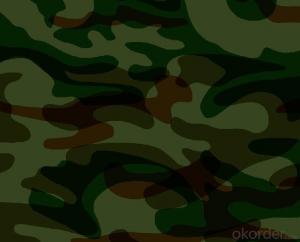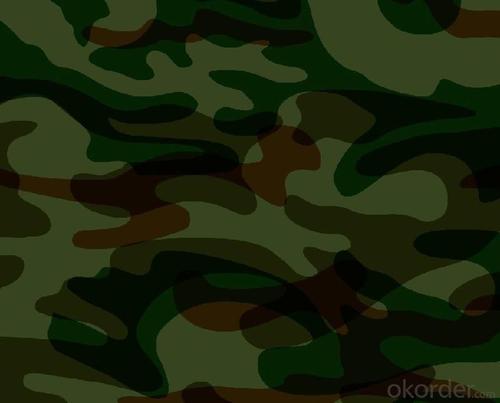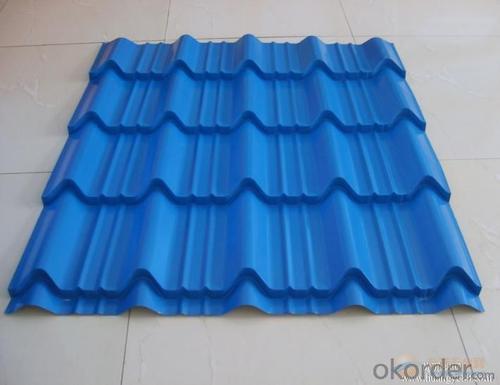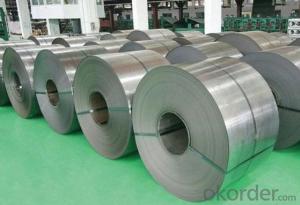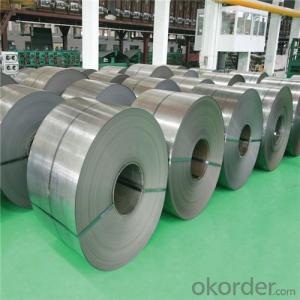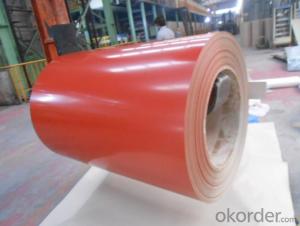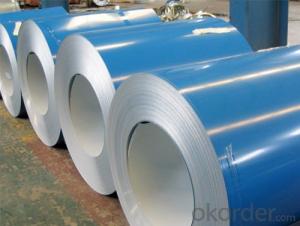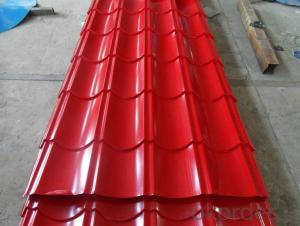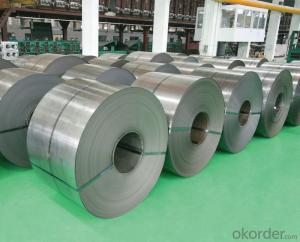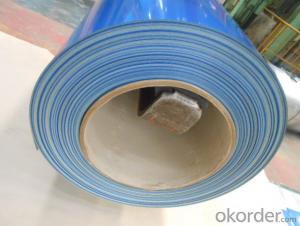PPGI DX52D with Best Quality in China Low Price
- Loading Port:
- China main port
- Payment Terms:
- TT OR LC
- Min Order Qty:
- 50 m.t.
- Supply Capability:
- 10000 m.t./month
OKorder Service Pledge
OKorder Financial Service
You Might Also Like
Specification
1. PPGI DX52D with Best Quality in China Low Price
With GI as base material, after pretreatment (degrease and chemical treatment ) and liquid dope with several layers of color, then after firing and cooling, finally the plate steel is called pre-painted galvanized (aluzinc) steel. Pre-painted galvanized steel is good capable of decoration, molding, corrosion resistance. It generally displays superior workability, durability and weather resistance.
2.Main Features of PPGI DX52D :
• Excellent process capability
• Smooth and flat surface
• Workability, durability
• Excellent heat resistance performance
• High strength
3.Pre-Painted Galvanized/Aluzinc Steel Coil Images
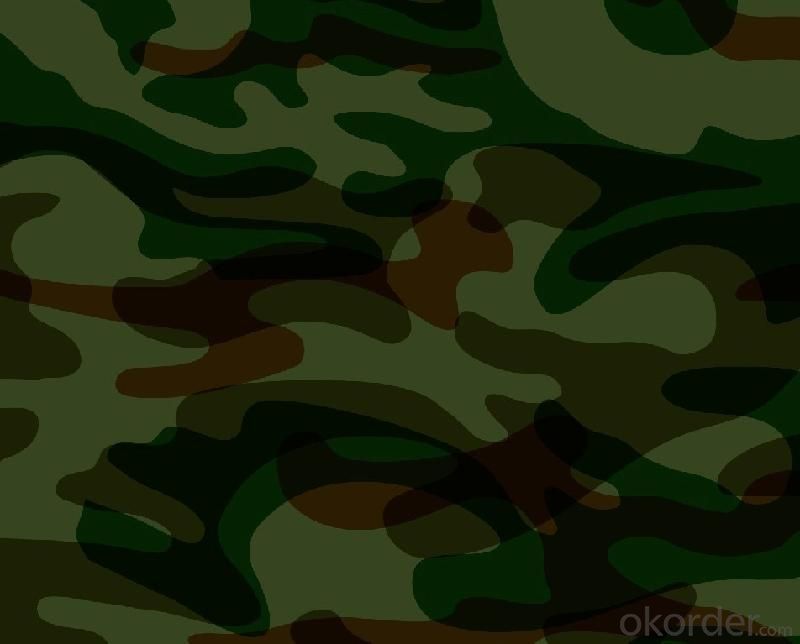
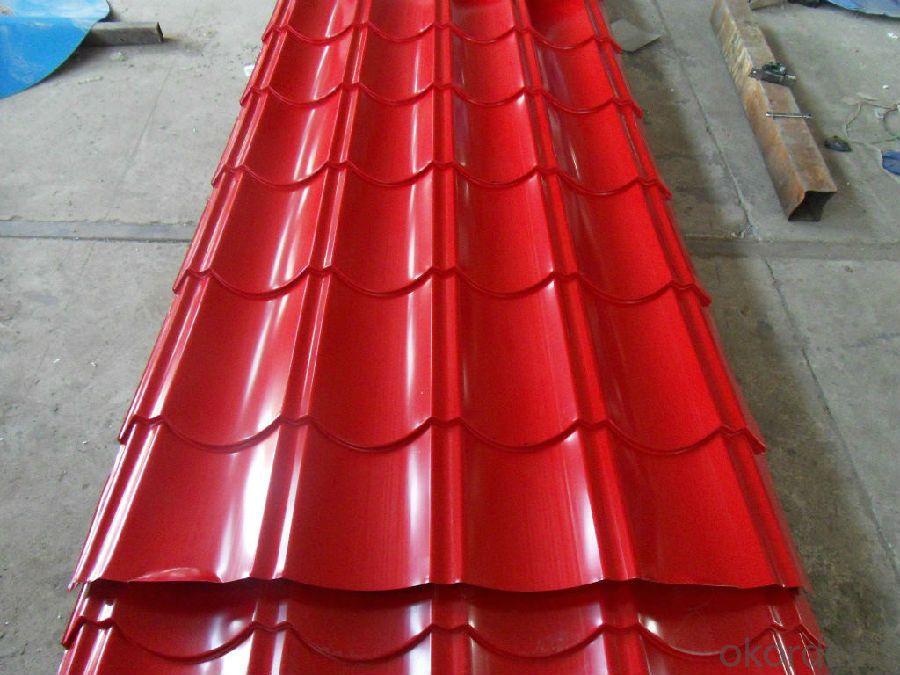
4.Pre-Painted Galvanized/Aluzinc Steel Coil Specification
Standard: AISI, ASTM, BS, DIN, GB, JIS
Grade: DX51D, DX52D
Thickness: 0.17-2.0mm
Brand Name: KMRLON
Model Number: coil
Type: Steel Coil
Technique: Cold Rolled
Surface Treatment: Coated
Application: Boiler Plate
Special Use: High-strength Steel Plate
Width: 20-1250mm
Length: customized
commoidty: pre-painted galvanized steel coil
Thickness: 0.13-4.0mm
width: 20-1250mm
zinc coating: 40-180g/m2
printing thickness: top side: 20+/-5 microns, back side: 5-7 microns
color: all RAL color
surface treatment: color coated
coil weight: 4-7 tons
coil ID: 508/610mm
packaging: standard seaworthy packing
5.FAQ of Pre-Painted Galvanized/Aluzinc Steel Coil
1. What’s the brand of the paint?
We use the best brand of all of the word—AKZO.
2. How to guarantee the quality of the products?
We have established the international advanced quality management system,every link from raw material to final product we have strict quality test;We resolutely put an end to unqualified products flowing into the market. At the same time, we will provide necessary follow-up service assurance.
3. How long can we receive the product after purchase?
Usually within thirty working days after receiving buyer’s advance payment or LC. We will arrange the factory manufacturing as soon as possible. The cargo readiness usually takes 15-25 days, but the shipment will depend on the vessel situation.
- Q: I'm a big fan of stainless steel and sterling silver, but not of the humidity of the country I'm in. Therefore I sweat more. Gross, I know. I'm buying a necklace chain for my ring.So does sweat contribute to tarnishing of silver and steel? The real kind?
- steel shouldn't really tarnish, it rusts and moisture increases that. Silver tarnishes when exposed to air and sulfur. Moisture increases the process a bit, but it happens anyway. Sweat is not gross, it's a necessary function of your body, otherwise you would die. A lot of sports people wear jewelry and they sweat a lot. If you wear the jewelry all the time, that will prevent the tarnish a bit. If you take it off, clean it (water and dish washing liquid), dry it and put it in a zip lock back to keep it away from air and moisture. In the end, cleaning the jewelry is quick and easy so don't worry about it.
- Q: How are steel coils used in the production of metal containers?
- Steel coils are used in the production of metal containers by being processed and formed into sheets, which are then shaped and welded to create the body and lids of the containers. The strength and durability of steel make it an ideal material for these containers, providing protection for goods during transportation and storage.
- Q: What are the different types of surface treatments for steel coils?
- There are several different types of surface treatments available for steel coils, each designed to enhance the appearance, protect against corrosion, and improve the overall durability of the steel. Some of the commonly used surface treatments for steel coils include: 1. Hot-dip galvanizing: This process involves immersing the steel coils in a bath of molten zinc, which forms a protective layer on the surface. Hot-dip galvanizing provides excellent corrosion resistance and can withstand harsh environments. 2. Electro-galvanizing: In this method, a thin layer of zinc is electroplated onto the surface of the steel coils. Electro-galvanizing offers good corrosion resistance and improves the aesthetics of the steel. 3. Organic coating: Steel coils can be coated with organic materials such as paints, lacquers, or polymer films. These coatings provide protection against corrosion, abrasion, and UV radiation, while also offering a wide range of color options. 4. Phosphating: Phosphating is a chemical treatment that converts the steel surface into a layer of phosphate crystals. This treatment enhances the adhesion of subsequent coatings and improves the corrosion resistance of the steel. 5. Chromating: Also known as passivation, chromating involves the application of a chromate conversion coating onto the steel surface. This treatment enhances the corrosion resistance and provides a decorative finish. 6. Oiling: Oiling is a simple surface treatment that involves applying a thin layer of oil onto the steel coils. This treatment helps prevent corrosion during storage and transportation and can be easily removed before further processing. 7. Pickling: Pickling is a process where the steel coils are immersed in an acid solution to remove impurities and scale from the surface. This treatment improves the surface finish and prepares the steel for subsequent processing or coatings. 8. Tin plating: Steel coils can be coated with a layer of tin through electroplating. Tin plating provides excellent corrosion resistance, solderability, and aesthetic appeal. These are just a few of the many surface treatments available for steel coils. The choice of treatment depends on the specific requirements of the application, including the desired appearance, corrosion resistance, and environmental conditions the steel will be exposed to.
- Q: steel strutural
- Yes, it is classified for General structural purposes
- Q: What are the common surface defects in steel coils?
- Common surface defects in steel coils include scratches, rust, scale, pits, and stains.
- Q: How are steel coils inspected for edge quality using visual inspection?
- Steel coils are inspected for edge quality using visual inspection by carefully examining the edges of the coils for any defects, such as cracks, burrs, or unevenness. Trained inspectors visually assess the edges for any visible abnormalities or irregularities, ensuring that the edges meet the required quality standards for further processing or usage.
- Q: How are steel coils used in the production of steel clamps?
- Steel coils are used in the production of steel clamps as they provide a continuous supply of high-quality steel material. These coils are unwound and processed through various manufacturing steps, such as cutting, shaping, and forming, to create the desired shape and dimensions of the steel clamps.
- Q: What is the standard diameter of steel coils?
- The standard diameter of steel coils can vary depending on the specific industry and application. However, in general, the standard diameter of steel coils typically ranges from 24 inches to 72 inches. This range allows for easy handling, transportation, and storage of the coils. It is important to note that different industries may have their own specific requirements for steel coil diameters based on factors such as equipment compatibility, production processes, and logistical considerations.
- Q: What are the common maintenance practices for steel coils?
- Common maintenance practices for steel coils include regularly inspecting for any signs of corrosion, cleaning the coils to remove dirt and debris, applying protective coatings or paint to prevent rust, storing the coils in a dry and well-ventilated area, and ensuring proper handling and transportation to avoid any damage. Additionally, it is important to monitor and control the humidity levels around the coils to prevent moisture buildup, which can lead to corrosion.
- Q: Does Steel Cut Oatmeal have the same health benefits as Old Fashioned Oatmeal? What is the difference in processing?
- Steel Cut Oats Steel-cut oats are whole oat kernels cut into small chunks rather than being smashed flat as in oatmeal. This gives the oats more of a chew texture and also slows both cooking time and digestion time. That means that they have a lower glycemic index and are thus preferable for increasing satiety, lowering the insulin response to the meal, and keeping blood sugar levels from peaking. This also results in delaying hunger so a person is less likely to snack or get overly hungry before the next meal. Here is how I like to cook oats for breakfast. Ingredients 1/2 cup Dry steel cut oats 1 cup Water (You may want a little more than a cup, experiment to your liking) 2 T Raisins (optional or replace with chopped dried apricots etc.) 2 T Ground flax meal (optional, but high in healthy n-3 fatty acids and fiber) Salt to your taste (try Lite salt to lower sodium intake) 2T Sunflower seeds or almonds 1 cup Fresh berries or a banana Directions Heat water to a boil. While water is heating, add the salt, raisins, and flax meal. When the water boils, add the steel cut oats. Stir once. Turn heat down to simmer and cook covered for 7-8 minutes. Provides two small servings. Double for large servings or small servings for 4 people. Serve and eat while hot. Add soy milk or low fat milk. Slice fresh fruit on top to add extra flavor. My wife likes banana slices. I like fresh berries, peaches, or sugar free applesauce. For extra crunch sprinkle almonds or sunflower seeds on top.
Send your message to us
PPGI DX52D with Best Quality in China Low Price
- Loading Port:
- China main port
- Payment Terms:
- TT OR LC
- Min Order Qty:
- 50 m.t.
- Supply Capability:
- 10000 m.t./month
OKorder Service Pledge
OKorder Financial Service
Similar products
Hot products
Hot Searches
Related keywords
